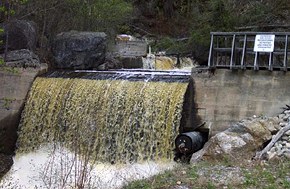Turbidity

Turbidity is a principal physical characteristic of water. Turbidity is an expression of the optical property that causes light to be scattered and absorbed by particles and molecules in the water, rather than transmitted in straight lines through a water sample. Turbidity is caused by suspended matter or impurities that interfere with the clarity of the water. These impurities may include clay, silt, finely divided inorganic and organic matter, soluble coloured organic compounds, and plankton and other microscopic organisms.
Simply stated, turbidity is the measure of relative clarity of a liquid. Clarity is important when producing drinking water for human consumption and in many manufacturing uses. Once considered as a mostly aesthetic characteristic of drinking water, significant evidence exists that controlling turbidity is a competent safeguard against pathogens in drinking water.
Erosion of natural substances and decomposition of plant and animal material will create particulate matter. This may enter water though runoff or percolation to groundwater.
Health Implications
Excessive turbidity, or cloudiness, in drinking water is aesthetically unappealing, and may also represent a health concern. Turbidity can provide food and shelter for pathogens. If not removed, turbidity can promote microbial regrowth in the distribution system. Although turbidity is not a direct indicator of health risk, studies show a strong relationship between removal of turbidity and removal of protozoa and other pathogens.
The particles of turbidity provide "shelter" for microbes by reducing their exposure to attack by disinfectants. Microbial attachment to particulate material or inert substances in water systems has been well documented and may aid in microbe survival.
Turbidity Reading
Turbidity is measured in units referred to as NTUs.
>1 NTU = Good
1-5 NTU = Fair
Over 5 NTU = Poor
Drinking water is usually between 1-5 NTUs.


